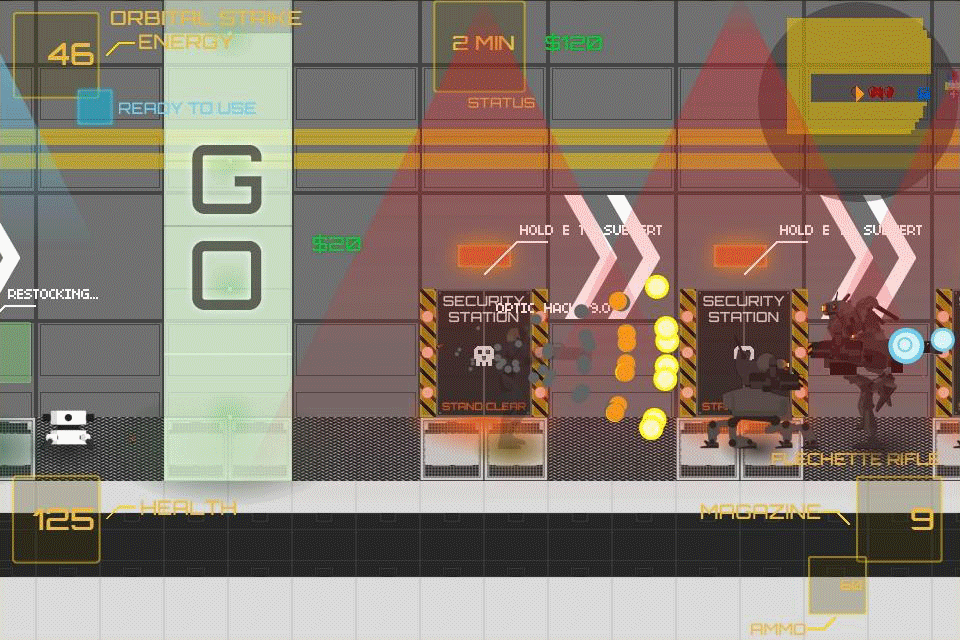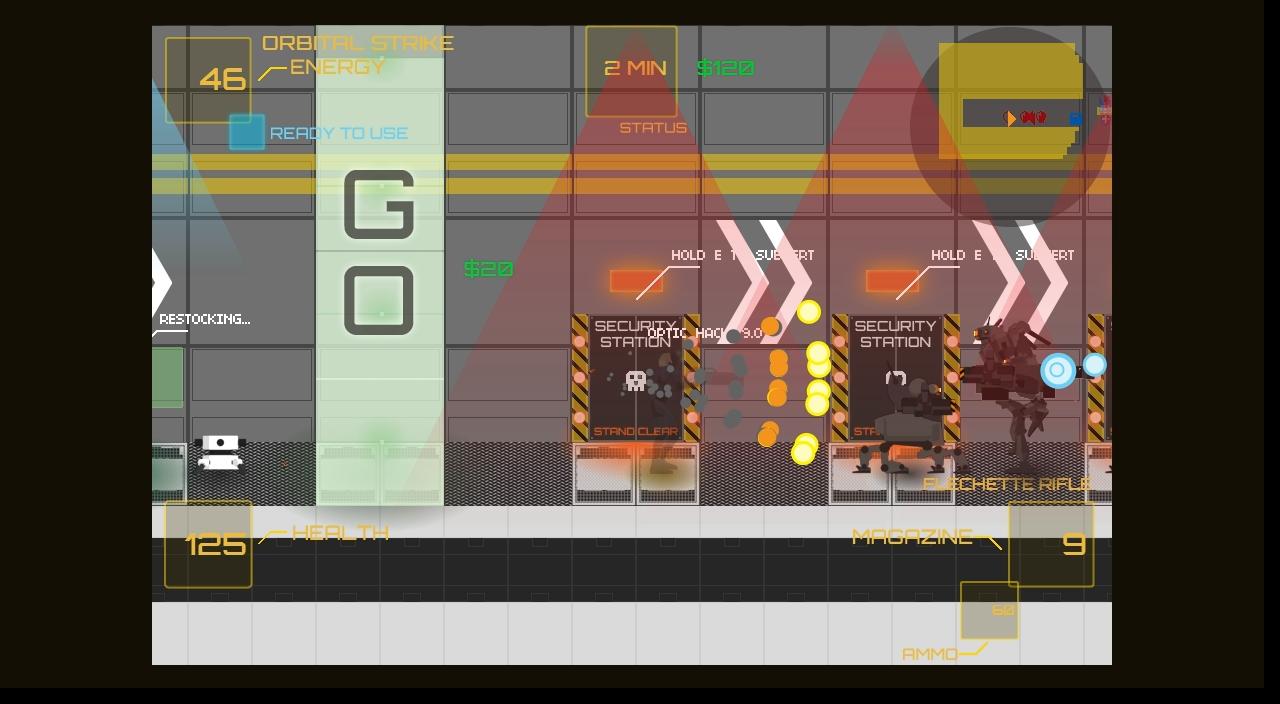This is a response to my post Mistakes Were Made, which covered some of the missteps I made while releasing my first title, Contract Work. I was surprised how many developers this resonated with (thanks for your kind feedback, everyone!). Since a few have asked what I’m doing differently now, I’ve been working on some follow-ups posts.
There are tactical/marketing things that I’d like to share, but this post focuses on what’s been helping me on the emotional/mental side. I will introduce some new/somewhat unproven concepts, so I understand if you choose to TLDR; please take these words with a grain of salt and a dash of patience.
Burnout
It was the end of September 2013, and I had spent the entire year creating and releasing my first indie game ‘Contract Work’. I had also finished two expensive ad campaigns; one to drive reviews, the other to build Facebook presence. I logged into Paypal for the umpteenth time to check the net return of my effort & investment. 3 copies sold over 2 months. It was a crushing moment, when I saw the full size of the re-work iceberg. Tired and discouraged, I walked away; it was the last time I touched the code for 4 months.
Our ‘Death March’
I really enjoyed Benjamin Quinteros post on crunch. He talks about the work-hard-or-get-out culture of the games industry:
There is too much at stake as each person on the team takes the world on their shoulders. If everyone isn’t working to their fullest potential (translated to some ratio of a 24 hour clock) then clearly that is the point of failure.
He’s speaking as a member of a studio team, but the same struggle applies to indies (maybe more so). You put yourself under relentless pressure to work more, and when things aren’t working, you blame it on your lack of effort. If only you’d tried harder, slept less and ignored more of your friends – then you would have succeeded. Promises made during an optimistic Kickstarter campaign added to my weight. I told my backers that I would release in the game next month, and I can’t let them down. But the thing I learned is that my game – and my life – only started to improve when I allowed myself to step back and rebalance my priorities.
Know Thyself – Understanding Flow
During my time away, I stumbled upon the book, “The Rise of Superman: Decoding the Science of Ultimate Human Performance” by Steven Kotler (I’m sharing a couple concepts from it, but it’s worth your time to read the whole). The central theme is ‘flow’, described (from Wikipedia) as ‘The mental state of operation in which a person performing an activity is fully immersed in a feeling of energized focus, full involvement, and enjoyment in the process of the activity’.
It’s likely you are already familiar with flow. You could probably recall at least one time when you were so immersed in work or an activity that you completely forgot yourself and all perception of time (flow actually shuts down these areas of your brain off for max efficiency). Accessing this state allows us to become, in Kolters words, ‘Supermen’:
“Researchers believe flow responsible for most athletic triumphs, major scientific breakthroughs and significant progress in the arts. In business, a ten-year McKinsey study found executives in flow five times more productive than their steady state peers.”
In conjunction with enhancing productivity, flow produces chemicals in the brain (dopamine, anandamide, seratonin) that makes us feel really good (How good? One of the primary effects of cocaine is increased production and hindered absorption of dopamine). Flow makes us more productive, more creative and happier. So naturally we should just be in flow ALL THE TIME, right? Not quite…
Understanding the Flow Cycle
According to the research Kotler has put together, flow operates as a cycle in four stages.
- The first stage is struggle, where you build up (extrinsically and intrinsically) information.
- The second stage is release, which preps the brain for flow by severing prior thought and emotional patterns.
- The third stage is flow itself.
- The fourth stage is recovery, where the body replenishes and the brain absorbs the new memories from flow.
You can’t stay in flow permanently – flow literally drains us to the point where we have to recover. The harder we force ourselves back into flow (when we should be in recovery), the harder it becomes to achieve.
“In today’s world, rarely do we give ourselves permission to recover; rarely does anyone else. Finish one project and there are always a dozen more deadlines to be met…If we want to flow from cycle to cycle, we need to take full advantage of recovery to regroup and recharge…you have to go slow to go fast.”
Without the time to release/recover, we short-circuit the cycle; the longer we sustain the forced march (crunch), the less time we spend in flow. The less time we spend in flow, the less happy and productive we become. We drift straight into the unhappy cycle that ends in burnout.
Going with the Flow
The good news is that we can stop this spiral and get ourselves back to flow. Kotler suggests simple hacks for the flow cycle:
- For struggle, novel/new stimuli help prime the brain to take in information; things as simple as brushing your teeth with your off hand or taking a different route to work.
- For release, doing something completely different than the task at hand makes it easier for the brain to move into flow, such as taking a walk or watching a movie.
- For recovery, taking a short nap is a great way to speed up the cycle.
If I may phrase it more simply – live the rest of your life. Find new things that excite you – try a new restaurant, start playing a sport, travel to unknown locations. Take some time during your day to read a book, play a game or watch a funny clip. Nap when you’re exhausted. Worry less about ‘trying’ hard enough – flow is a powerful intrinsic motivator and will naturally draw you back into your work. Understand the time you take off is as important as the time you put in.
The Path Back
I’m certainly no scientific authority on flow and I can’t guarantee results from this advice. But I can tell you that I discovered, quite by accident, that taking time to recover and learn was exactly what I needed. I spent my hiatus reading, re-connecting with long neglected friends, playing some new games (Risk of Rain being a great inspiration) and spent a week in the Dominican Republic learning to surf and hand-fish in the ocean.
When I returned to Contract Work again, I felt a similar excitement as when I first started. Design choices, coding, art…everything felt easier. Development no longer felt like a burden, but (once again) an opportunity to make something amazing.
It’s still a struggle for me to keep myself in flow and out of crunch, but I’m working to be better at it; I take little breaks during my work cycles to clear my mind, I’ll give myself a day off on weekends to watch a movie and try a new restaurant, and I schedule big chunks of un-interrupted time so I can enjoy the hell out of my time in flow.
I don’t know if Contract Work will ever be the game I dream it can be, but the passion and the love has returned to my work. There’s no longer any need to lie when I say “I’m living the dream”.
The difference a little time off can make – transforming .gif of the Contract Work release and the in-development Contract Work: First Day


